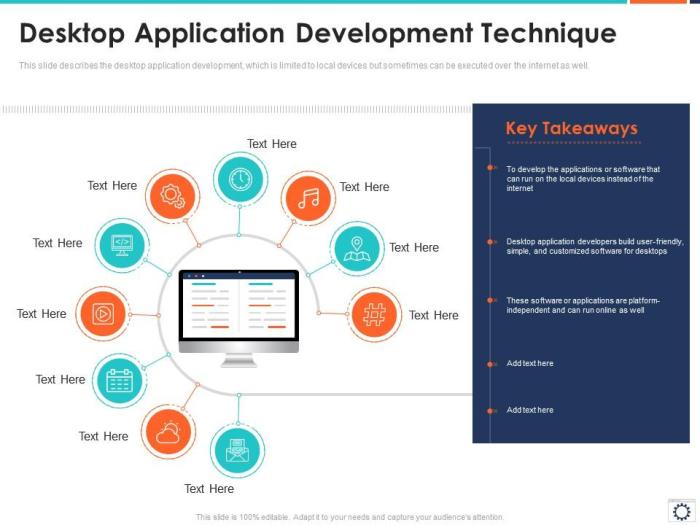Nearshore software development for desktop apps – The development of high-quality desktop applications is crucial for businesses seeking robust, reliable, and user-friendly software solutions. While offshore outsourcing has been a popular choice, nearshore software development offers a compelling alternative, particularly for businesses in North America and Europe. This comprehensive guide explores the benefits, considerations, and best practices of nearshore software development for desktop applications.
Understanding Nearshore Software Development
Nearshore software development involves outsourcing software development projects to a country geographically closer to the client’s location. For North American companies, this often means partnering with developers in Mexico, Central America, or parts of South America. For European businesses, nearshore options might include countries in Eastern Europe or North Africa. This proximity offers significant advantages over offshore outsourcing, which typically involves working with teams in far-flung locations like India or Asia.
Key Advantages of Nearshore Development for Desktop Apps, Nearshore software development for desktop apps
- Reduced Time Zones Differences: Communication and collaboration are significantly smoother due to minimal time zone discrepancies. This facilitates real-time communication, quicker turnaround times, and efficient problem-solving.
- Improved Communication and Collaboration: The geographical proximity enables easier face-to-face meetings, workshops, and more frequent communication, fostering stronger working relationships and better project understanding.
- Cultural Proximity and Shared Values: Nearshore partners often share similar business cultures and values, leading to better understanding and reduced cultural misunderstandings that can hinder offshore projects.
- Cost-Effectiveness: While not as drastically cheaper as offshore outsourcing, nearshore development still offers significant cost savings compared to in-house development, particularly for specialized skills.
- Stronger Intellectual Property Protection: The closer geographical proximity allows for better control and protection of intellectual property (IP) compared to distant offshore locations.
- Easier Travel and On-site Collaboration: Traveling to the development team’s location is simpler and more affordable, facilitating on-site collaboration and knowledge transfer.
Choosing the Right Nearshore Partner for Desktop App Development
Selecting the right nearshore partner is paramount for project success. Consider these key factors:
Essential Considerations When Selecting a Nearshore Partner:
- Technical Expertise and Experience: Assess the partner’s proficiency in relevant technologies, such as .NET, Java, C++, Python, and frameworks like Electron, Qt, or WPF, depending on your desktop application’s requirements. Look for a proven track record of successful desktop app development projects.
- Communication and Collaboration Skills: Effective communication is critical. Assess the partner’s communication skills, responsiveness, and their approach to collaboration. Consider language proficiency and cultural understanding.
- Project Management Methodology: Ensure the partner employs a robust project management methodology (e.g., Agile, Scrum) that aligns with your project requirements and allows for transparency and regular progress updates.
- Security and Data Protection: Verify the partner’s security protocols and data protection measures to ensure the confidentiality and integrity of your intellectual property and sensitive data.
- References and Case Studies: Request references from previous clients and review case studies to gauge the partner’s capabilities and past performance.
- Legal and Contractual Aspects: Engage legal counsel to review contracts and ensure that intellectual property rights, payment terms, and other crucial aspects are clearly defined and protected.
Technologies Used in Nearshore Desktop App Development
Nearshore developers are proficient in a wide range of technologies suitable for desktop application development. The choice depends on factors like platform compatibility, performance requirements, and development budget.
Popular Technologies for Desktop Application Development:
- .NET (C#): A powerful framework for building Windows desktop applications.
- Java: A cross-platform language suitable for developing applications for various operating systems.
- C++: A high-performance language often used for resource-intensive applications.
- Python: A versatile language with extensive libraries, useful for various desktop applications.
- Electron: A framework that allows developers to build cross-platform desktop applications using web technologies (HTML, CSS, JavaScript).
- Qt: A cross-platform application and UI framework that supports various operating systems.
- WPF (Windows Presentation Foundation): A framework for building visually rich Windows desktop applications.
Challenges and Mitigation Strategies
While nearshore development offers numerous advantages, it’s essential to acknowledge potential challenges and develop mitigation strategies.

Source: cmarix.com
Addressing Potential Challenges:
- Language Barriers: While cultural proximity reduces language barriers, clear communication protocols and potentially translation services might still be necessary.
- Cultural Differences: Even with cultural similarities, subtle differences in work styles and communication preferences can arise. Establish clear expectations and communication guidelines from the outset.
- Time Zone Differences (though minimized): While less significant than offshore, minor time zone differences can still impact real-time collaboration. Strategic scheduling and communication tools can help manage this.
- Data Security and Intellectual Property Protection: While closer proximity reduces risks, robust security protocols and contractual agreements are crucial to protect sensitive information and intellectual property.
Frequently Asked Questions (FAQ)
- Q: Is nearshore development more expensive than offshore? A: Generally, yes, but it’s significantly less expensive than in-house development and offers a better balance between cost and quality, communication, and project management.
- Q: What are the best nearshore locations for desktop app development? A: For North American companies, Mexico, Central America, and parts of South America are popular choices. European companies often consider Eastern Europe or North Africa.
- Q: How can I ensure the quality of the nearshore development team’s work? A: Thoroughly vet potential partners, review their portfolio, request references, and establish clear quality assurance processes and regular progress reviews.
- Q: What are the risks associated with nearshore development? A: Potential risks include language barriers, cultural differences, and data security concerns. Mitigation strategies involve careful partner selection, clear communication protocols, and robust security measures.
- Q: How do I manage communication with a nearshore development team? A: Utilize various communication tools like video conferencing, project management software, instant messaging, and regular status meetings to maintain consistent and effective communication.
Conclusion
Nearshore software development presents a compelling solution for businesses seeking high-quality desktop applications while benefiting from cost-effectiveness and improved communication. By carefully selecting a nearshore partner and implementing robust project management practices, businesses can leverage the advantages of nearshore development to achieve their software development goals.

Source: slideteam.net
References
- Toptal: Nearshore vs. Offshore Outsourcing
- Outsourcing Inc: Nearshore Outsourcing
- [Add more relevant links here]
Call to Action: Nearshore Software Development For Desktop Apps
Ready to explore the benefits of nearshore software development for your next desktop application project? Contact us today for a free consultation!
Questions Often Asked
What are the key benefits of nearshore development over offshore development?
Nearshore development offers advantages such as reduced time zone differences, improved communication, and potentially lower travel costs compared to offshore development. Cultural proximity also often leads to better understanding and collaboration.
How can I ensure effective communication with a nearshore development team?
Establish clear communication protocols, utilize project management tools, and schedule regular meetings (both virtual and in-person if feasible). Consider language training or the use of translation services if needed.
What are some potential risks associated with nearshore software development?
Potential risks include challenges related to cultural differences, differing legal frameworks, potential language barriers, and the need for careful vendor selection to mitigate risks of quality issues or project delays.

Source: cmarix.com
What types of desktop applications are best suited for nearshore development?
Nearshore development is well-suited for a wide range of desktop applications, from simple utilities to complex enterprise software, depending on project size, complexity, and budget.
